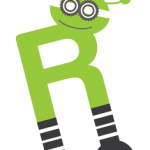
ER4STEM2015 - 2018
Many children lose their natural curiosity for how things function and interrelate to each other along the way into their lives as young adults. The Educational Robotics for STEM (ER4STEM) project aims to turn curious young children into young adults passionate about science and technology with a hands-on use case: robotics. Read more →

FLOBOT2015 - 2017
Supermarkets, as well as other industrial, commercial, civil and service premises have to be cleaned daily and during the day. FLOBOT addresses these demands by integrating existing research results into a professional floor washing robot platform for wide area industrial, civil and commercial premises. Read more →
Crazy Robots2014 - 2015
Crazy Robots is a science communication project of the Vision for Robotics Group, funded by FWF Wissenschaftsfonds. The project aims to teach school students robotics from the product development perspective and addresses all students (not only the ones interested in Science, Technology Engineering, and Mathematics – STEM). Read more →
SQUIRREL2014 - 2018
Clutter in an open world is a challenge for many aspects of robotic systems, especially for autonomous robots deployed in unstructured domestic settings, affecting navigation, manipulation, vision, human robot interaction and planning. Squirrel addresses these issues by actively controlling clutter and incrementally learning to extend the robot’s capabilities while doing so. Read more →
Argonauts2014 - 2016
Total has launched in December 2013, the ARGOS Challenge (Autonomous Robot for Gas and Oil Sites), an international robotics competition designed to foster the development of a new generation of autonomous robots adapted to the oil and gas sites. These robots will be capable of performing inspection tasks, detecting anomalies and intervening in emergency situations. Read more →
FRANC2013 - 2015
While in modern agriculture increasingly powerful complex machines with advanced technology are used organic farming is characterized by multiple manual tasks. The project FRANC develops and builds an autonomous vehicle which can be used especially in organic farming. Read more →

STRANDS2013 - 2017
STRANDS aims to enable a robot to achieve robust and intelligent behaviour in human environments through adaptation to, and the exploitation of, long-term experience. Our approach is based on understanding 3D space and how it changes over time, from milliseconds to months. Read more →
V4HRC2013 - 2016
The aim is to explore how human dyads cooperate in vision-based tasks and how they achieve grounding. The findings from human dyad will then be transferred in an adapted manner to human-robot interaction in order to inform the behavior implementation of the robot. Read more →
HOBBIT2011 - 2015
While world players in home care robotics tend to follow a pragmatic approach such as single function systems (USA) or humanoid robots (Japan, Korea), we introduce a new, more user-centred concept called “Mutual Care”: By providing a possibility for the Human to “take care” of the robot like a partner, real feelings and affections toward it will be created. Read more →
Meta Mechanics2008 - 2009
The metamechanics RoboCup@Home team was established in late 2008 at the Vienna University of Technology. It is a mixed team of the Faculty of Electrical Engineering and Information Technology and the Department of Computer Science. Read more →